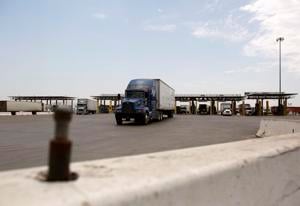(The Center Square) — Truck parking has been a thorny problem in Pennsylvania, and a PennDOT commission has almost two dozen ideas for how to improve it statewide.
During a meeting of the State Transportation Advisory Committee on Thursday, recommendations include state incentives for truck parking, repurposing state-owned properties, and adding parking into economic development projects and county comprehensive plans.
Rebecca Oyler, chair of the truck parking task force and CEO of the Pennsylvania Motor Truck Association, said the plan creates a framework to prioritize where truck parking is most needed and gives PennDOT officials a guide for the future.
Without more truck parking, officials warn that safety becomes an issue, and a financial problem, too.
“The average truck driver in the United States loses $5,900/year in lost time and productivity just looking for parking spaces on a regular basis,” said Thomas Phelan, a consultant for Gannett Fleming, whom PennDOT hired to carry out the report.
The report ranked high-priority areas, with the Philadelphia and Pittsburgh areas presenting problems, along with Harrisburg and Allentown. Figuring out how to accommodate those areas, Phelan wants to focus on truck stops and industrial parks instead of rest areas.
“We’re really focusing on (truck stops and industrial parks) because these are the ones where we get the most bang for the buck,” Phelan said. “Without having to go and do a bunch of small projects, let’s focus on a few big ones.”
Renovating rest stops, in contrast, would only generate 5-10 spaces, he noted.
Though Phelan demurred on naming specific sites, he singled out Philadelphia’s Bellwether District and the Fairless Hills site north of the city in Bucks County, formerly a U.S. Steel facility, as “ideal opportunities” because both are in the redevelopment process already.
If not, finding other options could be tough due to the high price of land and potential community opposition to making a parcel into an industrial use.
“These are the challenges we face — the cost of real estate’s a big one,” Phelan said, especially near Philadelphia. “Why is there not a TA (travel center) or Pilot there now? Because it’s an awful lot of money to put out … it’s not necessarily going to be the highest and best use of real estate in areas where we need parking the most.”
PennDOT officials have noted for years that the commonwealth has had a shortage of truck parking even as they expected truck traffic to grow. In the recommendations, officials’ emphasis was on identifying new parking sites, updating zoning rules, getting local governments more involved, giving parking responsibility to a “PennDOT executive sponsor,” and educating the public to avoid conflicts.
“What happens if you don’t have staging on site?” Phelan asked. “You end up with trucks parked all over your local streets around your industrial areas anyway — or even worse, out on the highway.”
This article was originally published by a blackchronicle.com . Read the Original article here. .

